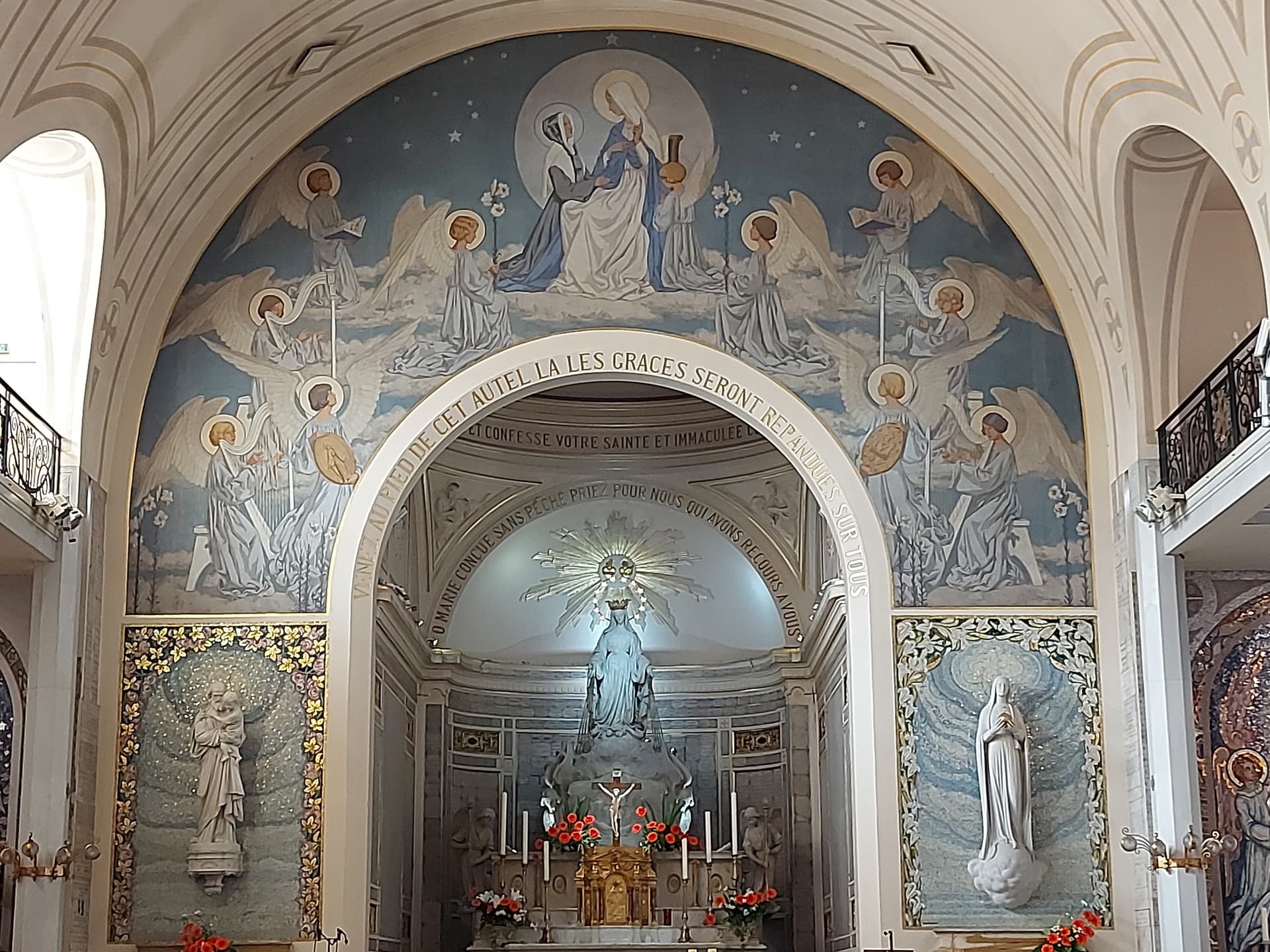Audio GuideChapel of Our Lady of the Miraculous Medal
Chapelle Notre-Dame-de-la-Médaille-Miraculeuse
Intimate art nouveau chapel associated with Marian apparitions & housing several saints' relics.
Chapelle Notre-Dame-de-la-Médaille-Miraculeuse is located at one hundred and forty Rue du Bac in Paris, France. It was commissioned by King Louis the Eighteenth and constructed in eighteen thirteen, initially dedicated to the Sacred Heart of Jesus in eighteen fifteen. Over the years, the chapel has grown into a cherished landmark, drawing visitors eager to explore its rich history and spiritual significance.
The chapel's design beautifully exemplifies the neoclassical style. Its evolving architecture retains original elements while incorporating delicate details that reflect a deep respect for the divine. Inside, the tranquil atmosphere is enriched with historical artefacts and sacred relics.
A central feature of the chapel's history is the story of Catherine Labouré, a novice with the Daughters of Charity. In eighteen thirty, she experienced several apparitions of the Virgin Mary. During these visions, Catherine observed profound symbols. One such vision displayed the Virgin Mary showing her heart in white, red, and black, symbolising peace, fervour, and love. The apparitions also included an image of Christ, represented as a crucified king.
Following these experiences, the Virgin Mary requested the creation of a medal bearing the inscription, "O Mary, conceived without sin, pray for us who have recourse to thee." This became known as the Miraculous Medal, famously used during a cholera epidemic in Paris. Today, the chapel houses significant relics, including the incorrupt body of Catherine Labouré in a glass coffin, the bones of Louise de Marillac, and the heart of Saint Vincent de Paul.
The image of Mary received a pontifical coronation by Pope Leo the Thirteenth in eighteen ninety-seven, enhancing the chapel's reputation as a pilgrimage site. Overseen by the Daughters of Charity of Saint Vincent de Paul, the chapel remains a cultural treasure and a sacred haven for visitors from across the globe.




